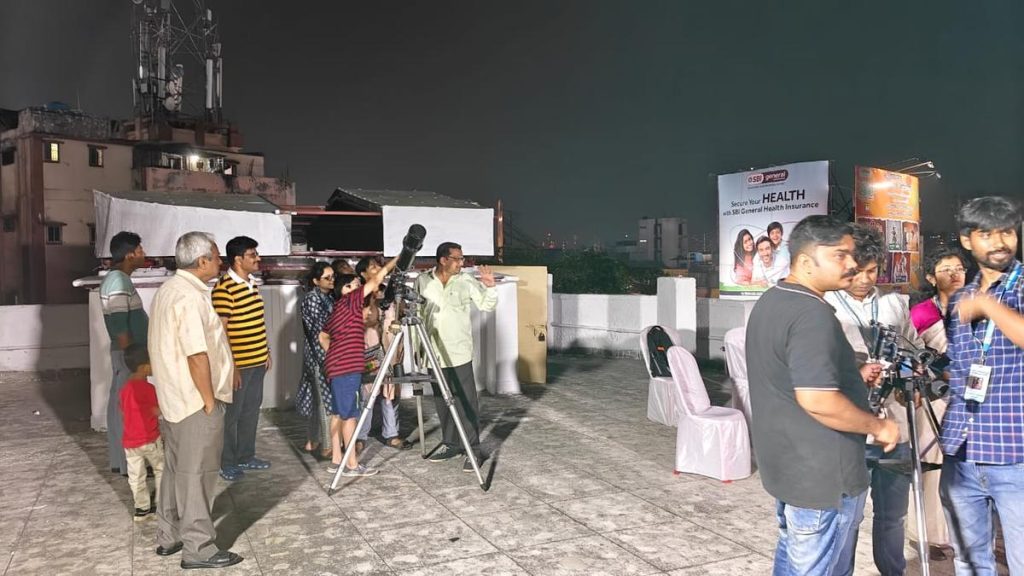
The telescope structure itself is a mix of fiberglass, wood, and steel — materials carefully selected for their strength and practicality.
| Photo Credit: Special Arrangement
Two groups in Kolkata related to astronomy have created what they claim to be the largest handmade telescope in the city — a 14.5-inch f/5 Dobsonian that is low-cost, powerful, and easy to handle.
Built by young scientists and optical observers from Observational Astronomy Centre (OAC) and from Institute of Astronomy Space and Earth Science (IASES) the telescope, according to the groups, will create a unique opportunity for space research that will serve not just academic circles but the society at large.
“It embodies both craftsmanship and scientific ambition. The core of this telescope is its large parabolic primary mirror, which was painstakingly hand-ground and shaped in Kolkata — an extraordinary feat of optical engineering,” Sudipta Sasmal, co-founder and associate professor of IASES, said.
He said the origin of the mirror’s glass blank made it even more impressive. “It was repurposed from a ship porthole salvaged from the Kandala shipyard, showcasing a brilliant example of upcycling for scientific advancement,” Dr. Sasmal said.
The telescope was installed at the rooftop of the Shyambazar residence of Biswajit Bose, a primary member of OAC and close associate of IASES. “This initiative aims to make astronomy more accessible and ignite curiosity and scientific thinking in the wider community,” Mr. Bose said.
Dr. Sasmal added, “This is not merely a personal or amateur project — it is intended for scientific application. It will be used for the study of bright variable stars, the follow-up observation of transient astronomical phenomena such as novae or supernovae, and detailed planetary observations. In addition to these scientific pursuits, the telescope will also play a vital role in science outreach. It is set to become a valuable tool for engaging and educating students from schools, colleges, and universities, igniting interest in observational astronomy and experimental science.”
About the craftsmanship, he explained that after the initial grinding and shaping, the mirror underwent fine polishing and aluminisation in Delhi to achieve the high-quality optical surface required for precise astronomical observations. The telescope structure itself is a mix of fiberglass, wood, and steel — materials carefully selected for their strength and practicality. Although it is manually operated, the telescope can track celestial objects for several minutes, making it highly functional for serious observational work.
Published – April 10, 2025 07:52 pm IST


